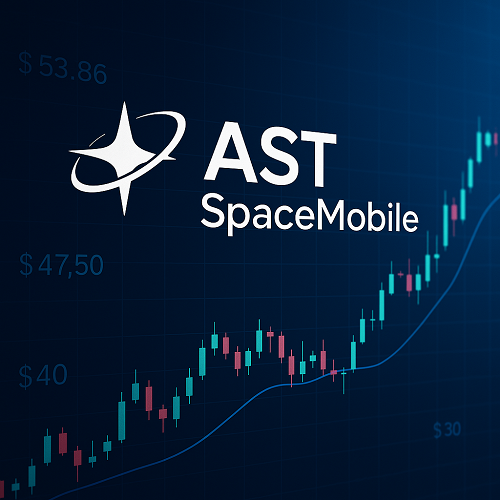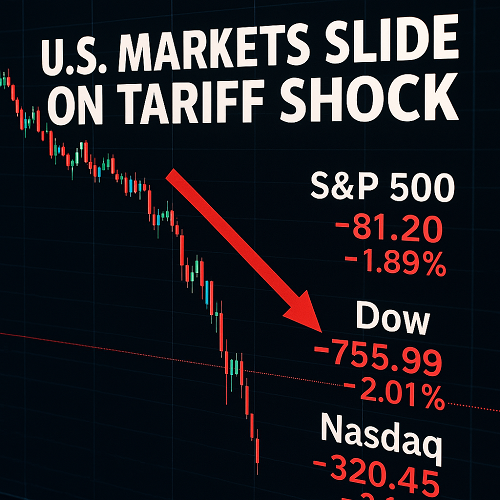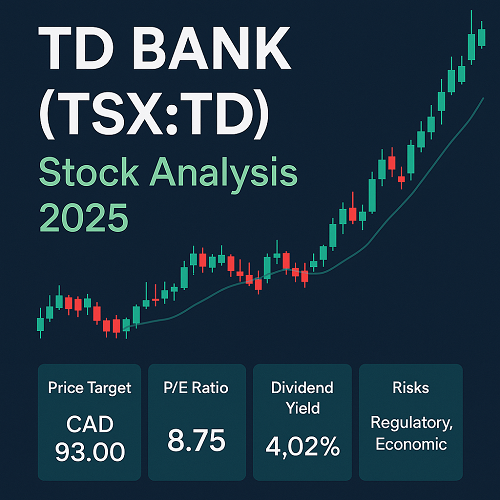AST SpaceMobile, Inc. (Ticker: ASTS) is focused on building a space-based cellular network allowing standard smartphones to connect directly to satellites, bypassing terrestrial cellular infrastructure in remote and underserved areas. Listed on the Nasdaq, ASTS is paving the way for innovative communication solutions.
- The core technology centers on BlueBird satellites, which aim to provide broadband speeds and integrate with existing mobile networks without requiring special hardware.
- Their vision: global coverage including oceans, rural zones, and remote regions.
- ASTS operates in a capital-intensive tech sector bridging telecom and aerospace.
This hybrid positioning places ASTS in a high-risk, high-reward bracket: it is among the few publicly traded names attempting “space-to-cellular” connectivity.
Market Opportunity & Competitive Landscape
Market Potential
- The global remote connectivity / IoT / broadband addressable market is enormous, especially in areas without traditional coverage.
- Growth in satellite internet, low-earth orbit (LEO) constellations, and demand for ubiquitous connectivity strengthens tailwinds.
- Governments, defense agencies, and underserved populations are willing to pay premiums for reliable coverage.
Competition & Risks
Key competitors and alternatives include:
- SpaceX / Starlink: Their push into direct-to-cell (D2C) is a close rival.
- OneWeb and other satellite internet players expanding coverage.
- Traditional cellular carriers building out infrastructure in remote zones.
- Technology risk, spectrum regulation, and satellite deployment logistics are barriers.
Because ASTS is trying a “first mover” path, it is exposed to execution risk, regulatory delays, and scaling uncertainties.
Financials & Recent Earnings
Recent Performance
From its latest earnings (Q2 2025):
- Revenue: ~$1.16 million vs. expectations ~$6 M+ — a miss.
- EPS (Normalized / GAAP): –$0.41 (negative, with a miss).
- Historically, ASTS has had minimal revenues as it invests heavily in R&D, satellite deployment, and infrastructure.
Estimates & Projections
- For FY 2025, consensus revenue estimate is ~$59.55 million (implying a massive YoY growth rate)
- EPS estimates remain negative (–$0.96) reflecting ongoing losses.
- Forward P/S ratios implied are extremely high due to low base revenue.
Growth Metrics & Ratios
- ASTS earns a strong growth grade on Seeking Alpha metrics — e.g. year-over-year revenue growth is extremely high (249%+), though many metrics are “NM” (non-meaningful) due to the business’s early stage.
- Quant Ratings and momentum metrics show strong relative strength versus the market.
Growth Drivers & Catalysts
Here are the key levers that could push ASTS’s valuation higher:
| Catalyst | Description | Timeline / Uncertainty |
|---|---|---|
| Commercial contracts | Telco partnerships (AT&T, Vodafone, etc.) enabling user adoption | 2025–2026 |
| Government / Defense deals | Contracts to provide connectivity in remote or disaster zones | Medium-term |
| Regulatory approvals & spectrum access | Gaining necessary licenses, spectrum rights (e.g. S-band) | High uncertainty |
| Satellite deployment scale | Launching more BlueBird units to improve coverage & redundancy | 2025+ |
| Economies of scale | Lower per-unit cost as satellite production scales | Mid to long term |
| Monetization / ARPU growth | Revenue per user, service upsells, premium pricing | Dependent on adoption & competition |
Any of these going “right” could trigger nonlinear valuation upside.
Risks & Challenges
A balanced appraisal must highlight the downside risks:
- High cash burn / funding risk
ASTS is burning significant capital without near-term profitability. If revenue doesn’t ramp, dilution or debt issuance could follow. - Technical & deployment risk
Satellite tech is hard — failures, delays, launch costs, and maintenance can derail timelines. - Regulatory & spectrum risk
Obtaining rights across nations, dealing with spectrum auctions, coordination with governments is complex. - Competition & substitution
If Starlink or others succeed in direct-to-device, ASTS’s moat could be undermined. - Execution & scale risk
Integrating with carriers, scaling operations globally, maintaining infrastructure are non-trivial challenges. - Valuation multiples compression
The current valuation assumes high growth. If expectations slip, multiples can shrink aggressively.
Valuation & Analyst Forecasts
Analyst Ratings & Price Targets
- Seeking Alpha’s aggregation shows Average Price Target ~$53.86, with a –27.95% downside relative to some current levels.
- Analysts are mixed: some bullish on the vision, others cautious due to execution risk.
- Quant ratings and momentum metrics remain favorable in the short term.
Valuation Approaches
Given ASTS is pre-profit, traditional valuation (P/E) is not meaningful. Possible approaches:
- Discounted cash flow (DCF) with scenario modeling (bull/base/bear)
- Revenue multiple (P/S or EV/S) once meaningful revenue comes in
- Relative valuation vs. other public space / telecom hybrid firms
Scenario Example (Illustrative):
- Base case: revenue of $200M by 2027, margins still negative → valuation (~2–5× P/S)
- Bull case: revenue $500M+, scaling profitability, multiple expansion
- Bear case: delays or revenue shortfalls lead to multiple contraction
Note: Any DCF would require aggressive assumptions (growth, margin expansion, discount rate) and should be stress-tested.
Technical / Price Action Analysis
Recent Price Behavior & Momentum
- ASTS has shown strong upward price momentum vs. S&P 500 over recent periods.
- Momentum and Quant scores are favorable, indicating institutional interest.
Support & Resistance Levels (Hypothetical)
While I don’t have full chart data, a trading-oriented approach would pinpoint:
- Support zones — prior consolidation areas, round numbers, moving averages
- Resistance zones — recent highs, trendline caps
- Volume breakouts — look for volume spikes to confirm moves
- Trend channels — assessing slope, breakout potential
A technical overlay (e.g. MACD, RSI) could help time entries and exits.
Investment Thesis & Scenarios
Here’s how one might frame the investment case:
Bull Thesis (Vision Plays Out)
- ASTS becomes a key infrastructure play enabling seamless global cellphone connectivity
- Partnerships with major telecoms lead to adoption, ARPU, and recurring revenue
- Economies of scale bring down costs; satellite deployment accelerates
- Market assigns a premium multiple due to growth story
Bear Thesis (Execution Fails / Competition Wins)
- Revenue growth disappoints; losses persist
- Regulatory or spectrum delays undermine rollout
- Rival technologies (Starlink D2C) capture market share
- Investor sentiment shifts, triggering multiple contraction
Base / Base-Bear / Base-Bull Scenarios
- Base: Moderate adoption, gradual revenue ramp, narrow losses for several years
- Base-Bear: Slower adoption, more dilution, extended times to profitability
- Base-Bull: Fast adoption, operating leverage kicks in, multiple expansion
How to Trade ASTS (Entry, Stops, Timeframes)
For both swing and longer-term traders:
| Strategy | Timeframe | Entry Signal | Stop / Risk Control | Target Zones |
|---|---|---|---|---|
| Swing / Momentum Trade | Weeks to a few months | Breakout above short-term resistance + volume confirmation | Use ATR or below support | First resistance zones, then trend targets |
| Trend / Position Trade | 6–18 months | Pullback to support or re-testing breaks | Trailing stop (e.g. moving average) | Multi-year scenario targets |
| Speculative Entry | Long-term (3–5 years) | Small position into pullbacks | Hard stop % (e.g. 20–30%) | Based on growth case valuations |
Risk management tips:
- Size positions conservatively (given high volatility)
- Use stop-loss orders or mental stops
- Monitor news, regulatory updates, earnings closely
- Be prepared for drawdowns or whipsaws
Frequently Asked Questions (FAQs)
Q: Is ASTS profitable now?
A: No — ASTS is still operating at a loss. Recent EPS are negative and revenue is minimal.
Q: When might ASTS break even?
A: There’s no consensus, but profitability likely years away; scaling and cost reduction are key.
Q: How does ASTS differ from Starlink?
A: ASTS focuses on space-to-cellular (direct to standard phones), whereas Starlink historically targets satellite broadband. However, Starlink is pushing into D2C. Competition is emerging.
Q: Should I buy ASTS now?
A: It depends on your risk tolerance. It is speculative. If you believe in the long-term vision, a small allocation might make sense; for risk-averse investors, wait for more revenue clarity.
Q: What are key upcoming catalysts to watch?
- Launch/activation of new BlueBird satellites
- Announcements of telco or government contracts
- Regulatory / spectrum auctions & approvals
- Earnings reports and guidance
Conclusion
AST SpaceMobile (ASTS) is among the boldest plays in the intersection of telecom and space. Its dream of global, direct-to-device connectivity carries potential for massive upside — but is tethered to high execution, regulatory, and financial risk.
For those with a high risk tolerance, ASTS offers a speculative “moonshot” opportunity. But it’s not for most. Before investing, one must watch for signs of consistent revenue growth, contract validation, and managing dilution.





 XAUT-USD
XAUT-USD  AMD
AMD  MARA
MARA  SHOP
SHOP  BULL
BULL  CL=F
CL=F